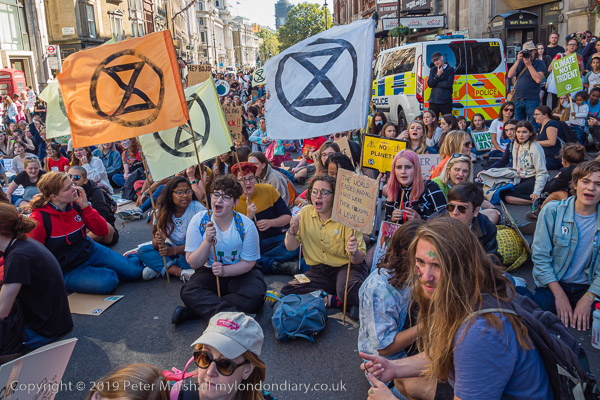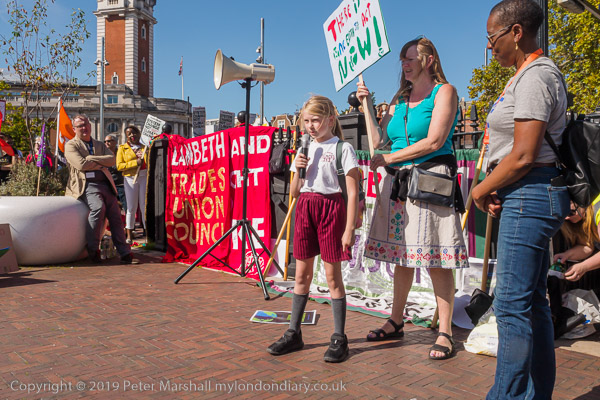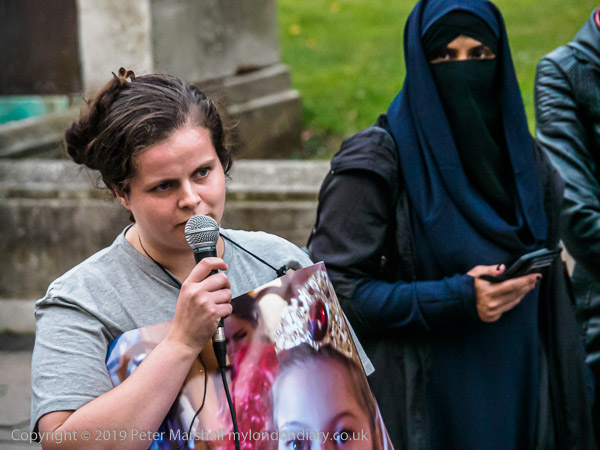
I had hurried back to central London to photograph an event in Trafalgar Square by Extinction Rebellion Youth International but I had no idea what they intended to do, and I walked a couple of times around the square and saw no sign of them.

It isn’t unusual to find an event that has been posted on the Internet but doesn’t actually take place. People sometimes have an idea, set up an event on Facebook or some other listing site, then either forget about it or give up when they have failed to persuade anyone else to join them and don’t bother to post that it isn’t happening. And sometimes dates or times or locations are changed and unless you check you will be at the wrong place or at the wrong time. And some organisations can be relied on almost always to turn up late.

So I’d more or less given up on XR Youth and was thinking about photographing a couple of other things I’d seen on my way to the square when I saw a group walking into the middle of the square, some of them holding posters and I walked across and began taking pictures

They formed a large circle in the centre of the square and then sat down in silence facing outwards. And that appeared to be it, though someone did at some point make a short statement. I walked around the circle and took pictures. Some had face paint, quite a few had small XR symbols on their clothes or faces and one held up an XR flag. It seemed a very low-key protest and certainly attracted relatively little attention from the tourists who were wandering around.
There was a certain element of defiance in it. The bylaws actually prohibit protests in Trafalgar Square unless they have prior permission, but this one apparently went unnoticed by the ‘Heritage Wardens’ whose role is to enforce the regulations. They probably thought it was just another group of tourists sitting down to eat their sandwiches. Perhaps their photographs and mine, published on the web, are more important in gaining attention than the event itself.

As a static protest it would not have been illegal on the North Terrace up the steps in front of the National Gallery, which is still legally a part of the public highway, though a part that has now been pedestrianised for some years.
But rather curiously the rest of the square is the property of the Greater London authority, with bylaws set by the Mayor of London. It’s actually an offence to take photographs there, though tourists are seldom if ever prevented from doing so. And an outcry by my union and other bodies representing news photographers means that those of us with Press cards are allowed to use our cameras.
More at XR Youth International.
All photographs on this and my other sites, unless otherwise stated, are taken by and copyright of Peter Marshall, and are available for reproduction or can be bought as prints.



































